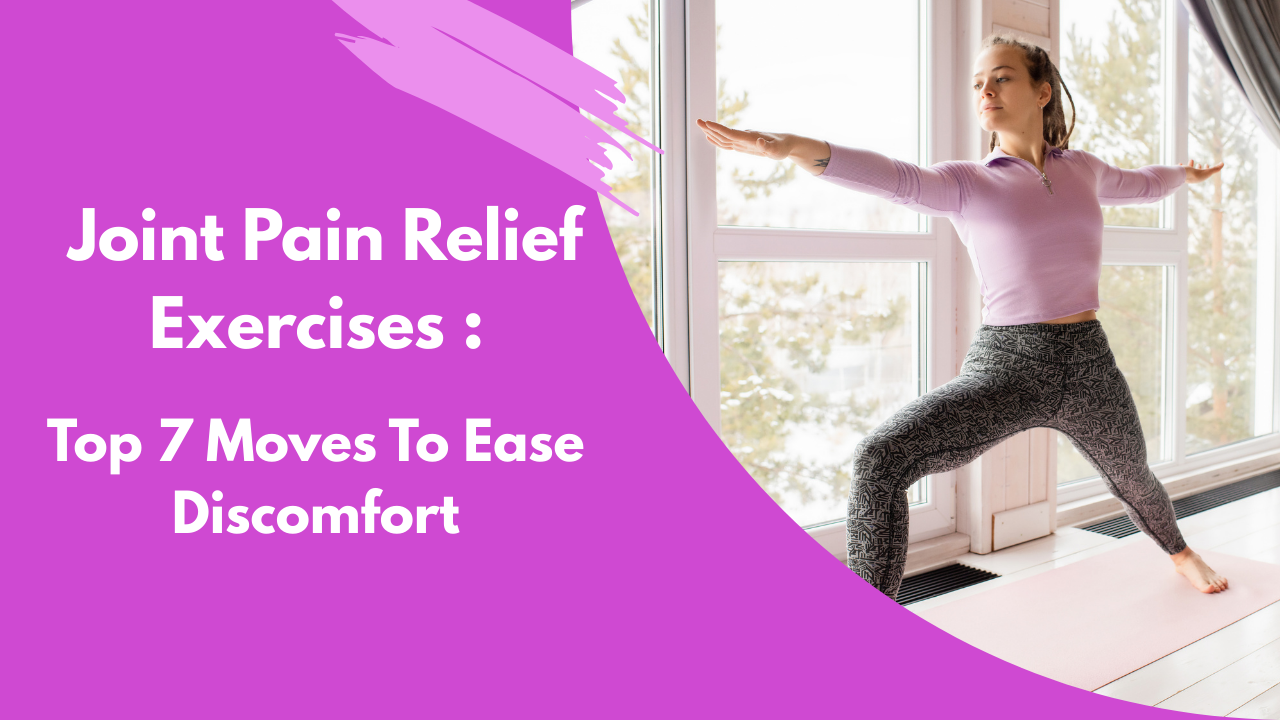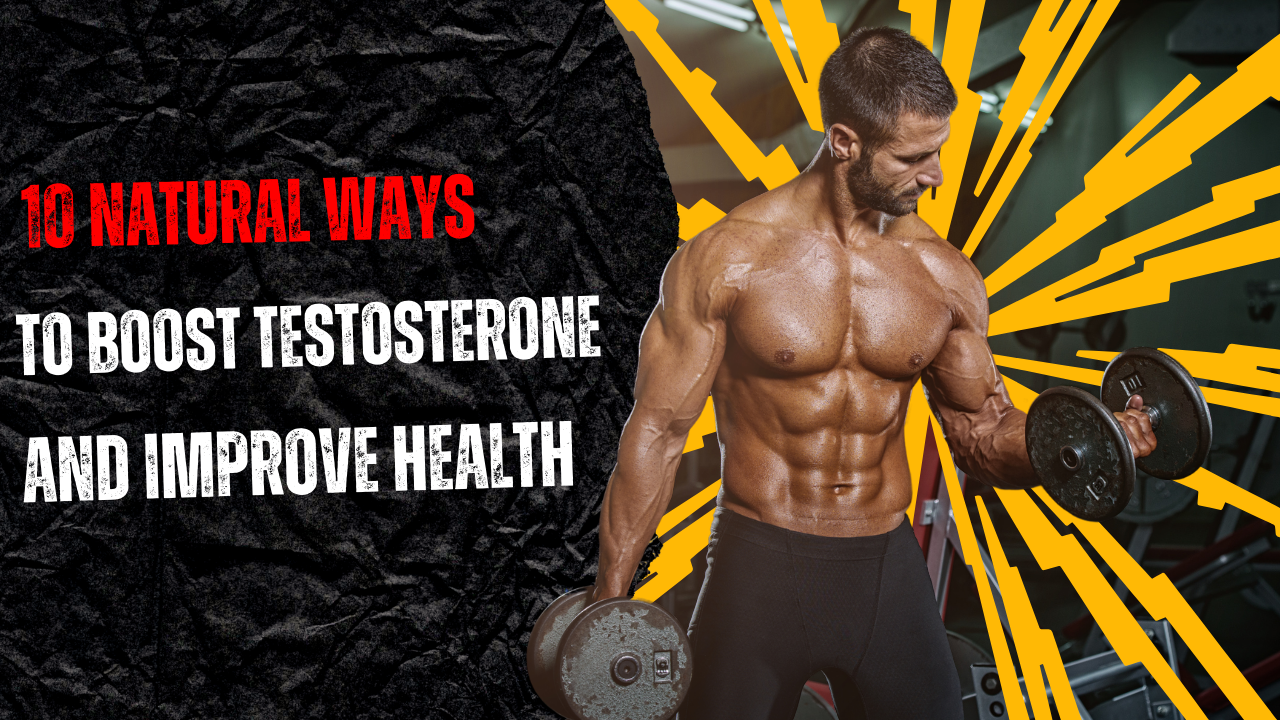Joint pain affects millions of people of all ages around the world. It can result from arthritis, injuries, aging, or a sedentary lifestyle. This ongoing discomfort not only limits everyday activities but also impacts mood and overall quality of life. While many believe rest is the best approach, movement often offers better long-term relief.
Regular exercise is one of the most natural and effective ways to ease joint pain. Gentle stretches and carefully chosen movements help reduce stiffness, improve flexibility, and strengthen the muscles around the joints. Staying active also enhances blood flow, lifts your mood, and supports overall wellness, making it a powerful tool for managing pain.
In this article, you’ll discover 7 of the best exercises for relieving joint pain. These routines are safe, easy to follow, and suitable for different areas of discomfort—whether it’s your knees, hips, shoulders, or hands. Each exercise can be adjusted to meet your comfort level and physical condition.
The Science Behind Exercise and Joint Pain
Before diving into specific exercises, it’s important to understand why exercise works so well in relieving joint pain.
Joints are surrounded by muscles, ligaments, and synovial fluid that cushion and support movement. When we remain inactive or avoid movement due to pain, muscles weaken, and joints stiffen, creating a vicious cycle of pain and immobility.
Before diving into specific exercises, it’s important to understand why exercise works so well in relieving joint pain.
Joints are surrounded by muscles, ligaments, and synovial fluid that cushion and support movement. When we remain inactive or avoid movement due to pain, muscles weaken, and joints stiffen, creating a vicious cycle of pain and immobility.
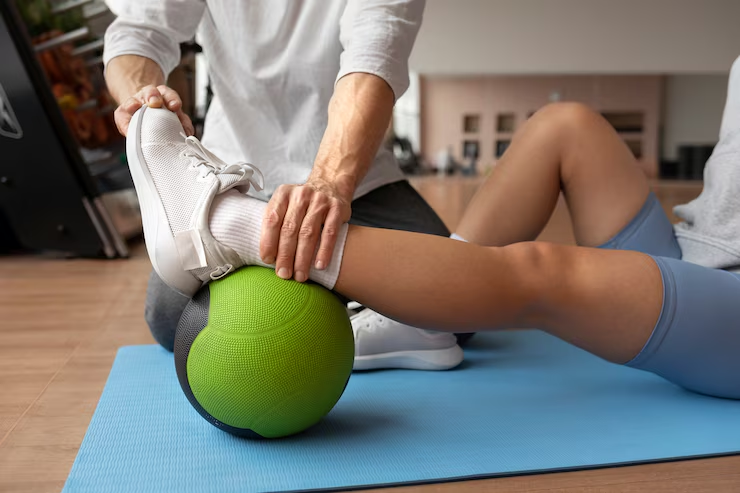
Exercise helps by:
Increasing synovial fluid production, which lubricates joints.
Strengthening muscles, reducing the load and stress on joints.
Improving flexibility and range of motion, making movement smoother.
Promoting weight loss, which significantly reduces pressure on weight-bearing joints like the knees and hips.
Releasing endorphins, which act as natural painkillers.
Low-impact and targeted exercises can thus slow down the progression of arthritis, manage pain, and help you regain control over your body.
Top Joint Pain Relief Exercises
Swimming and Water Aerobics
Swimming and water aerobics are excellent joint pain relief exercises because they are low-impact and easy on the joints. The water supports your body weight, reducing stress on painful areas like knees, hips, and shoulders. These exercises help improve flexibility, strengthen muscles, and boost circulation without putting pressure on the joints.
Water aerobics also promotes balance and coordination while providing a gentle full-body workout. Ideal for people with arthritis or chronic joint pain, these activities can be tailored to different fitness levels. Regular practice in the water can lead to better mobility, less stiffness, and an overall improvement in joint health.
Why It Works: Water provides buoyancy, which reduces the impact on joints while still allowing full-body movement. The resistance of water also helps build muscle without putting strain on the joints.
Benefits:
Gentle on knees, hips, and back.
Improves cardiovascular health.
Builds strength and endurance.
Increases joint flexibility.
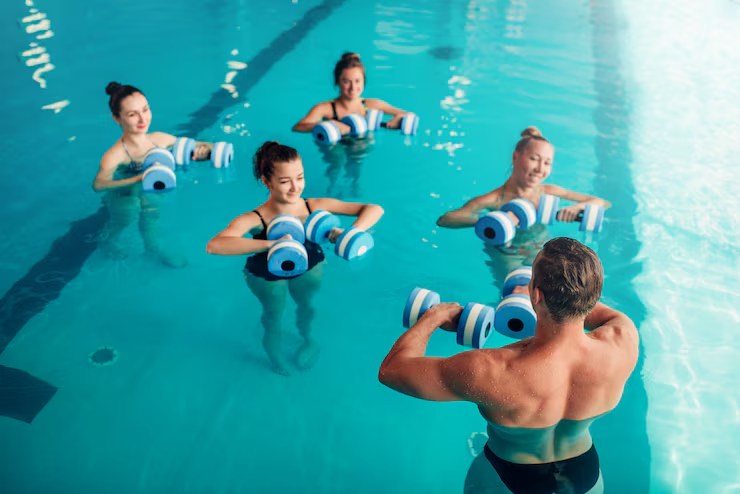
How to Do It:
Join a water aerobics class or swim laps at a comfortable pace.
Try water walking or gentle kicks in shallow water.
Focus on fluid movements and avoid sudden or jerky actions.
Pro Tip: Warm water pools (around 83-88°F) are particularly beneficial for soothing joint pain.
Tai Chi
Tai Chi is one of the most effective joint pain relief exercises, especially for older adults or those with arthritis. This gentle form of movement involves slow, flowing motions that improve balance, flexibility, and muscle strength without stressing the joints. Practicing Tai Chi regularly can help reduce stiffness, ease pain, and increase mobility over time. It also supports mental relaxation, which can lower stress and improve overall well-being.
Because it’s low-impact and easy to modify, Tai Chi is safe for people of all fitness levels. Its combination of movement and mindfulness makes it a powerful tool for managing joint discomfort naturally.
Why It Works: Tai Chi is a form of gentle martial art combining slow, flowing movements with deep breathing and mindfulness. It’s known to improve balance, reduce stiffness, and enhance joint mobility.
Benefits:
Low-impact and safe for all ages.
Enhances body awareness and coordination.
Reduces stress and tension in the body.
Increases flexibility in wrists, knees, hips, and shoulders.
How to Do It:
Start with beginner classes or guided videos.
Focus on slow, controlled movements such as “Wave Hands Like Clouds” or “Parting the Horse’s Mane.”
Practice for 20-30 minutes daily.
Pro Tip: The meditative aspect of Tai Chi also helps reduce the perception of pain.
Knee-to-Chest Stretch
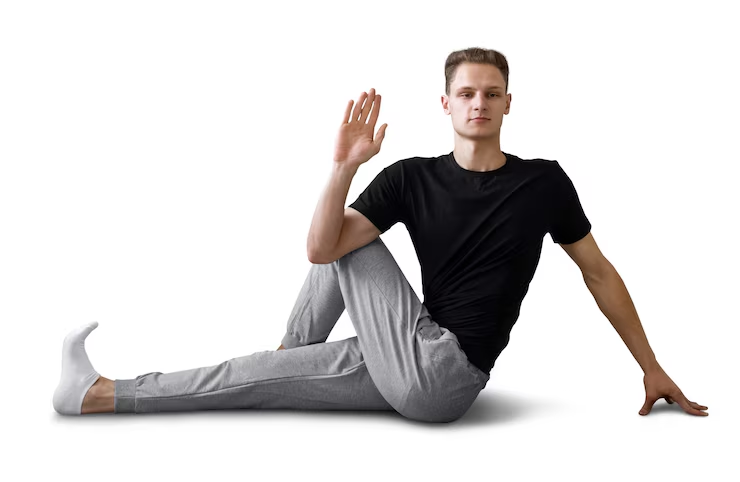
The knee-to-chest stretch is a simple yet effective move among joint pain relief exercises. It helps relieve tension in the lower back and hips while gently stretching the knees. To perform it, lie on your back with legs extended. Slowly bring one knee toward your chest, holding it with both hands for 20–30 seconds. Then switch legs. This stretch improves flexibility in the lower body and helps reduce stiffness and discomfort in the joints. It’s especially useful for people with lower back or hip pain. Adding this stretch to your routine can support better mobility and overall joint health.
Why It Works: This simple floor stretch targets the lower back and hips, relieving pressure in those areas and indirectly easing tension in the knees and spine.
Benefits:
Relieves tension in the lumbar spine and hips.
Increases flexibility and mobility.
Reduces stiffness in the lower joints.
How to Do It:
Lie on your back on a yoga mat with your legs extended.
Slowly bring one knee to your chest, keeping the other leg straight on the floor.
Hold the stretch for 20-30 seconds while breathing deeply.
Switch legs and repeat.
Do 3-4 repetitions on each side.
Pro Tip: Avoid pulling the knee too hard—use only a gentle motion.
Seated Leg Raises
Seated leg raises are gentle and effective joint pain relief exercises, especially for those with knee or hip discomfort. This simple move helps strengthen the muscles around the joints without putting pressure on them. To perform it, sit upright in a chair with both feet flat on the floor. Slowly lift one leg straight out in front of you, hold for a few seconds, then lower it back down. Repeat with the other leg. This exercise improves leg strength, enhances joint stability, and increases circulation. It’s a great option for beginners or individuals with limited mobility seeking pain relief and flexibility.
Why It Works: Strengthening the quadriceps (front thigh muscles) supports the knees and relieves pressure on the joint.
Benefits:
Improves knee stability.
Reduces strain on joints during walking or standing.
Builds muscle without stress on the joint.
How to Do It:
Sit upright on a sturdy chair.
Straighten one leg out in front of you, keeping it parallel to the floor.
Hold for 5 seconds, then lower slowly.
Repeat 10-15 times for each leg.
Perform 2-3 sets daily.
Pro Tip: You can add ankle weights for additional resistance as you progress.
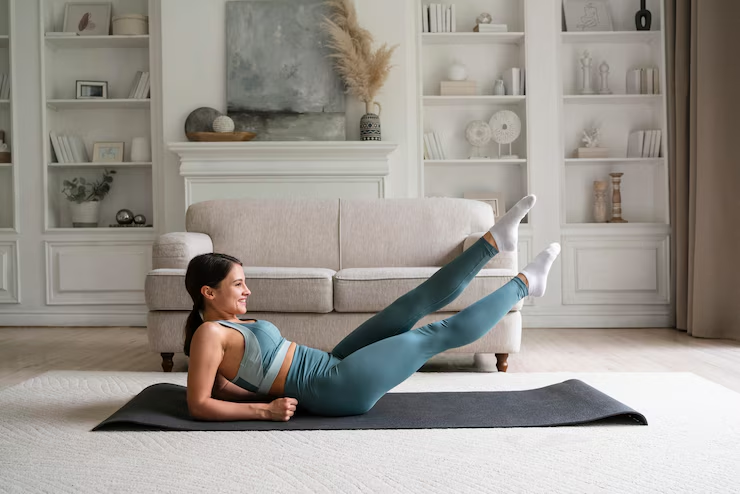
Wall Angels
Wall angels are excellent joint pain relief exercises that target the shoulders, upper back, and posture. To do them, stand with your back flat against a wall, feet a few inches away, and arms raised like goalposts. Slowly raise and lower your arms against the wall in a controlled motion, keeping contact with the surface. This exercise helps improve shoulder mobility, reduce stiffness, and strengthen the upper body muscles that support joint function. It also encourages better posture, which can reduce strain on the neck and back. Wall angels are gentle, effective, and suitable for most fitness levels and joint conditions.
Why It Works: Wall angels improve posture and shoulder mobility, often affected by joint stiffness or conditions like rotator cuff injuries and arthritis.
Benefits:
Reduces tension in the shoulders and upper back.
Improves thoracic mobility.
Helps align the spine and upper body.
How to Do It:
Stand with your back flat against a wall, feet shoulder-width apart.
Raise your arms up to form a “goalpost” shape, elbows bent at 90 degrees, touching the wall.
Slowly slide your arms up and down, maintaining contact with the wall.
Perform 10-15 repetitions.
Pro Tip: If you can’t keep your arms fully in contact with the wall, go as far as your range of motion allows and work up gradually.
Cat-Cow Stretch
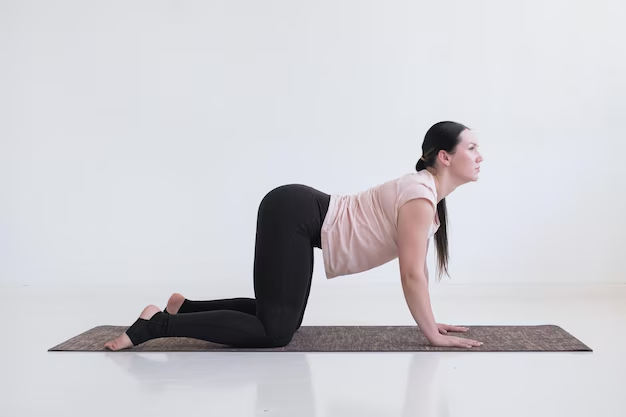
The Cat-Cow stretch is one of the most effective joint pain relief exercises for the spine and hips. Performed on hands and knees, this gentle movement involves arching the back (Cat) and then dipping it while lifting the head and tailbone (Cow). It improves flexibility, promotes spinal alignment, and relieves tension in the neck, shoulders, and lower back. The flowing motion between the two poses increases circulation to the joints and helps reduce stiffness. Ideal for people with back discomfort or a sedentary lifestyle, the Cat-Cow stretch can be practiced daily to support mobility, posture, and overall joint health.
Why It Works: The Cat-Cow stretch, commonly used in yoga, is excellent for spinal flexibility and relieving joint stiffness in the back, neck, and hips.
Benefits:
Improves posture and spinal alignment.
Reduces tension in the back and shoulders.
Encourages fluid motion of the spinal joints.
How to Do It:
Get on your hands and knees in a tabletop position.
Inhale and arch your back downward (cow pose), lifting your head and tailbone.
Exhale and round your spine upward (cat pose), tucking your chin and tailbone.
Repeat the sequence slowly for 1-2 minutes.
Pro Tip: Breathe deeply and move slowly with each breath for maximum benefit.
Finger and Wrist Flexor Stretch
The finger and wrist flexor stretch is a simple but effective addition to joint pain relief exercises, especially for those experiencing hand or wrist discomfort. To perform it, extend one arm forward with the palm facing up. Use the opposite hand to gently pull back on the fingers, feeling a stretch through the wrist and forearm. Hold for 20–30 seconds, then switch sides. This stretch helps reduce stiffness, improve flexibility, and ease tension in the joints of the hands and wrists. It’s particularly helpful for people with arthritis, carpal tunnel, or anyone who types or uses their hands frequently.
Why It Works: Many people experience joint pain in the fingers, especially those with osteoarthritis or rheumatoid arthritis. This stretch relieves stiffness and improves mobility in the hands.
Benefits:
Increases mobility in fingers, wrists, and forearms.
Reduces hand fatigue from typing or repetitive work.
Helps manage arthritis-related pain.
How to Do It:
Extend one arm in front of you with your palm facing upward.
Use the other hand to gently pull back the fingers, stretching the wrist and forearm.
Hold for 20-30 seconds.
Switch hands and repeat.
Pro Tip: Follow up with finger squeezing exercises using a stress ball for added strength.
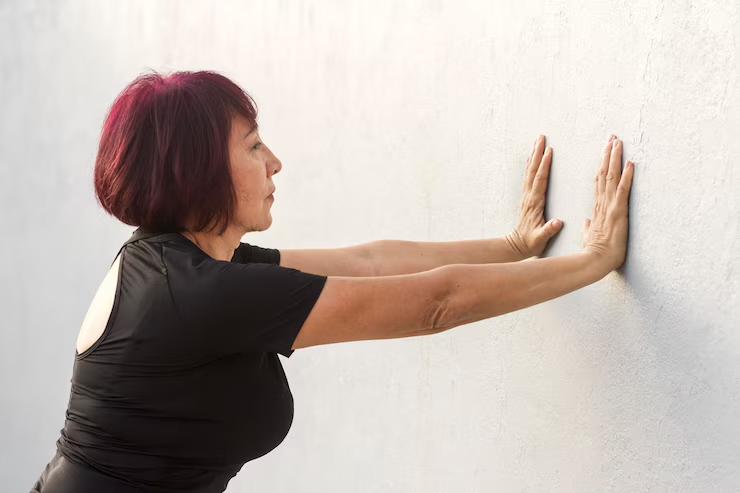
Tips for Getting the Most Out of Joint Relief Exercises
Warm up properly: Before starting any joint pain relief exercises, begin with 5–10 minutes of light movement like walking or gentle arm circles to prepare your joints and muscles.
Be consistent: Try to perform these exercises 3 to 5 times a week. Regular practice is essential for lasting joint pain relief and improved mobility.
Listen to your body: Only stretch to a comfortable point. Avoid any sharp pain, as joint pain relief exercises should never cause discomfort.
Combine with other methods: For better results, pair your routine with massage, physical therapy, or an anti-inflammatory diet.
Stay hydrated: Drinking enough water supports joint lubrication and helps your body move more smoothly.
Use support when needed: Don’t hesitate to use mats, braces, or supportive footwear to protect your joints and reduce strain during joint pain relief exercises.
Conclusion
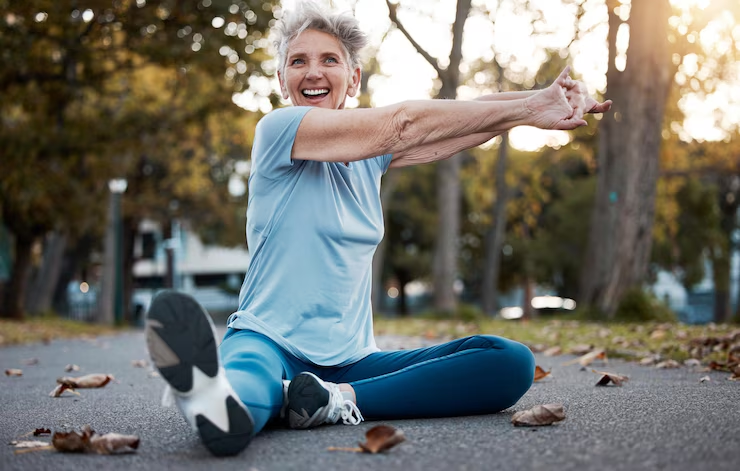
Joint pain can be a debilitating condition, but the right approach can offer substantial relief and even long-term improvement. Engaging in regular, low-impact joint pain relief exercises is one of the most effective ways to ease discomfort, strengthen supportive muscles, and restore mobility.
Whether you’re struggling with knee pain, stiff shoulders, aching wrists, or hip discomfort, incorporating targeted exercises like swimming, Tai Chi, leg raises, or gentle stretches can make a noticeable difference in how your joints feel and function.
The key is consistency, patience, and listening to your body’s needs. Always begin slowly, warm up adequately, and stop if you experience sharp pain. These exercises not only help with current joint issues but also prevent further degeneration and promote overall well-being. If pain persists or worsens, consult a medical professional to guide you. Start your journey to a more active, pain-free life with these top joint pain relief exercises today.
FAQs
Q.1 Can exercise really help relieve joint pain ?
Yes. Regular, low-impact exercise strengthens the muscles surrounding the joints, increases flexibility, improves circulation, and stimulates the production of synovial fluid (which lubricates joints). These benefits all contribute to reduced stiffness and pain. Over time, exercise can even help delay the progression of joint conditions like osteoarthritis.
Q.2 What type of exercise is best for joint pain relief ?
Low-impact exercises are ideal for joint pain. These include swimming, walking, Tai Chi, yoga, stretching, and resistance training using light weights or resistance bands. The key is to avoid high-impact or jarring activities that can worsen joint discomfort.
Q.3 How often should I do joint pain relief exercises ?
Aim for at least 3–5 times per week, starting with 15–20 minutes per session. As you build strength and flexibility, gradually increase the duration. Consistency is more important than intensity—slow, steady progress leads to the best results.
Q.4 Should I exercise if I feel pain during or after the workout ?
Mild soreness after exercise is normal, but sharp or worsening pain is a warning sign. Always listen to your body. Modify the movement or stop the exercise if it causes discomfort. Consult a doctor or physical therapist if you’re unsure.
Q.5 Can these exercises help with arthritis-related joint pain ?
Absolutely. Many joint pain relief exercises are specifically designed to help manage arthritis symptoms by improving range of motion, reducing inflammation, and strengthening muscles around affected joints. They are a recommended part of arthritis treatment plans.

